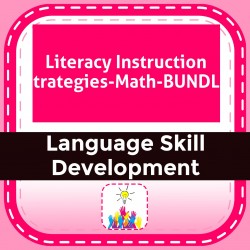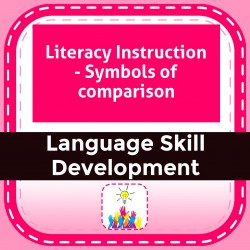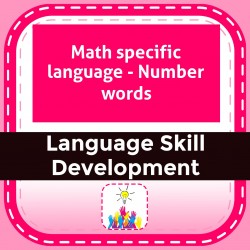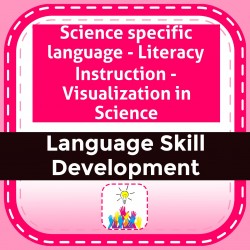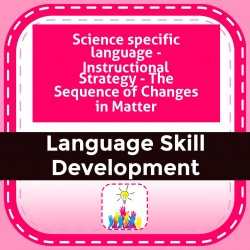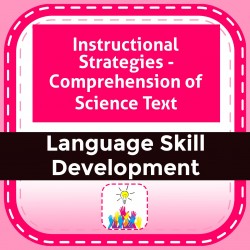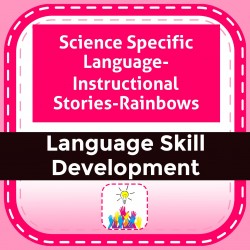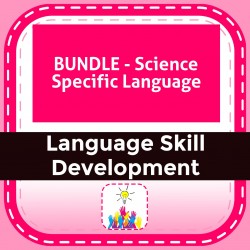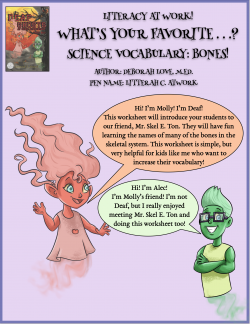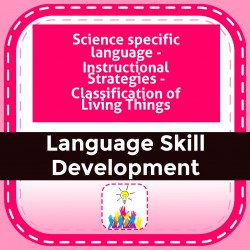Ability Levels
Categories
Resource Types
Age/Grade Range
CCSS
Anchor Standard
Speaking & Listening
Language
Reading
Literacy Instruction Strategies-Math-BUNDLE
$ 895
This bundle includes instructional activities that can be used for pre-teaching, re-teaching, or extra practice in math related vocabulary and concepts. Topics include math comprehension, measuring t
...
ime, number sense, order of operations, patterns, sequencing, symbols, equations, word problems, value, visual imagery in math, and critical thinking. 49 pages. Most activities can be used with all ages. Includes ID numbers 0891, 0892, 0893, 0894, 0969, 0973, 0974, 0976, 0977, 0978.
Literacy Instruction - Symbols of comparison
$ 195
These instructional strategies and activities include teaching less than, more than, and equal to equations in math. Included are activities for demonstrating equal, more, and less than, converting n
...
umber expressions into sentences, charting weather for comparison, ordering items using less and more than compared to..., and creating equations.
Math specific language - Number words
$ 295
These activities and worksheets cover various aspects of using number words, ordinals, prefixes (uni-, bi-, tri-, etc.), and shapes. Activities include choosing a number word, drawing by following ins
...
tructions, sentence practice, decoding number words in text, and critical thinking.
Science specific language - Literacy Instruction - Visualization in Science
$ 195
What is ‘visualization’ in science? Scientific research uses the words ’visualization’, ‘image’, ‘visual aid’, and ‘visual literacy’ interchangeably. The term ‘visualization’ is defined as the formati
...
s defined as the formation of mental images and as the process of interpreting information in visual terms. It assists with the explaining, developing, and learning of concepts. These instructional strategies and activities will help you help your students with concepts across the curriculum.
Science specific language - Instructional Strategy - The Sequence of Changes in Matter
$ 195
Changes in the state of matter are physical changes, not chemical changes. When a substance moves from one phase to another it is still the same substance. These instructional strategies and activitie
...
s can be used to introduce or reinforce states of matter. Activities include sentence completion, categorization, finding text evidence, and using critical thinking.
Instructional Strategies - Comprehension of Science Text
$ 3
It can be directions and procedures needed to conduct an experiment, an explanation of key facts in research reports needed to answer questions or solve a problem, or an expanded narrative in books, a
...
rticles, or websites providing background information. The child’s familiarity with the different formats and ability to comprehend information from them is closely related to general reading skills and competency. Includes strategies for activating prior knowledge, understanding text structures, and finding text evidence. See BUNDLE at S0XTEA0815.
Science Specific Language- Instructional Stories-Rainbows
$ 195
Rainbows are fascinating. These worksheets explore the science of rainbows with instructional strategies and activities for introducing light and color along with answering the questions when and wh
...
y rainbows appear. Activities use visuals to introduce new vocabulary, utilize text evidence, reinforce reading comprehension, and critical thinking.
BUNDLE - Science Specific Language
$ 795
This BUNDLE of instructional materials for teaching science concepts includes teaching packets on the science of colors, rainbows, asking questions, classifying living things, scientific elements, sta
...
tes of matter, time measures, visualization, and the value of science.
SCIENCE VOCAB: BONES!
$ 0
THE SKELETAL SYSTEM -- DOMAIN SPECIFIC SCIENCE VOCABULARY!Want a clever way to increase students' science vocabulary? Use this worksheet as Halloween approaches or at any time during the school year f
...
or a warm-up to the school day or in-between activities. In my many years of working as an educational interpreter, I noticed that it was not unusual for deaf and hard-of-hearing students who were behind their peers struggle with answering questions that began with: "What's your favorite . . .?" Often, they would answer "yes" or not be sure how to answer. The beauty of this type of worksheet is that there is no wrong answer, it is short-yet-effective, and it exposes students to a variety of categories and vocabulary within a specific domain. If time allows, it can open up a discussion on the topic. Gradually, this type of practice worksheet will help students learn how to answer this common question that seems easy on the surface, but not for those that may not have the background knowledge and vocabulary necessary to answer it.The thumbnail for this “What’s Your Favorite?” series will have a violet purple background - violet for vocabulary! Looking for fast and easy vocabulary building worksheets? Look for the violet thumbnails! Like the "What's Your Favorite...?" worksheet series? Leave me a comment so that I know you would like more!Debbie Love, M.Ed.
Science specific language - Instructional Strategies - Classification of Living Things
$ 195
All living things are organized in groups according to similar characteristics and common ancestry. Each groups start from the largest and progress to the smallest. These instructional strategies and
...
activities help students understand the scientific classification system (Kingdom, Phylum, Class, Order...). Activities include creating a Kingdom wheel, student research, living v. non-living, charting common characteristics of animals, and using critical thinking skills to create their own charts.
 Your browser is out of date. For best experience switch to latest updated Browser.
Your browser is out of date. For best experience switch to latest updated Browser.
 Get Chrome
Get Chrome Get Edge
Get Edge Get Firefox
Get Firefox